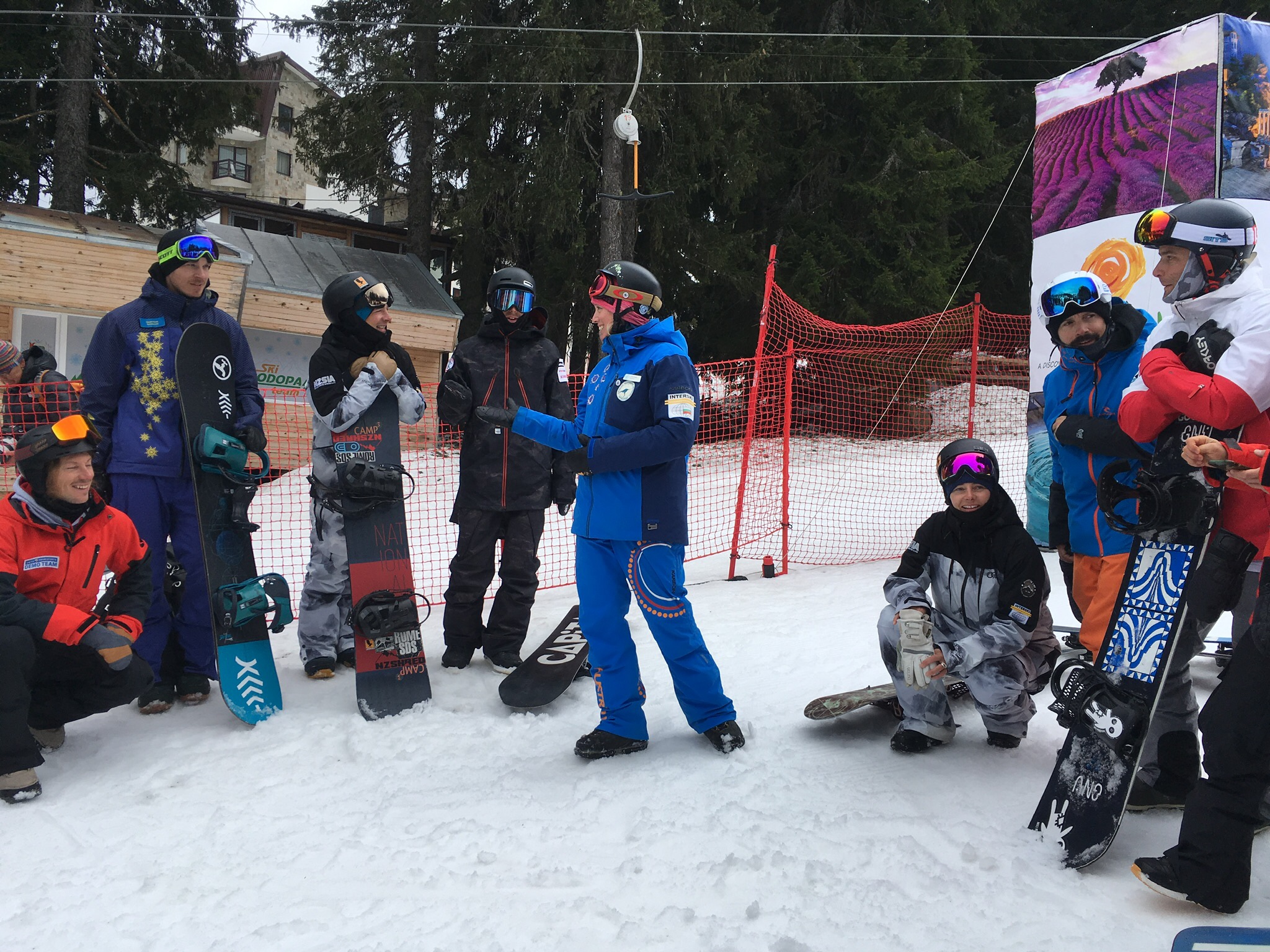10 days prior to leaving for Interski! I can’t believe we’re already there !
Great excitement and some nervousness are words that come to my mind when thinking about this career goal trip we’re about to take off for with the CASI Tech Team. Yet, I feel grateful and fortunate about this opportunity but also very proud to attend this international event representing our association.
My main goal while over there through sharing passion for the sport is to connect with the other nations team representatives and come back with innovative views and ideas for our programs to constantly evolve.
This snowboard instructor career dream is only one out of the many I had over the years and it has certainly contributed to constantly keep pushing my limits as a teacher, trainer and rider.
I remember when I started instructing at 15 years old, I was reading the CASI Newsletters and I was looking up to the different Interski Team Members, being inspired by all these CASI people. I was hoping to one day be able to live this experience.
I now surely hope this team of amazing humans can inspire other CASI folks to keep working hard to reach their personal and professional goals.
—
10 jours avant le départ pour Interski ! Je n’arrive pas à croire que nous y sommes déjà !
L’excitation et la nervosité sont deux mots qui me viennent à l’esprit lorsque je pense à ce voyage professionnel que nous sommes sur le point de faire avec l’équipe technique nationale de l’ACMS. Je me sens reconnaissante et chanceuse de cette opportunité, mais aussi très fière de participer à cet événement international pour représenter notre association.
Tout en partageant ma passion pour le sport, mon objectif principal à Interski est de nouer des liens avec les représentants des équipes des autres nations et de revenir avec des idées et des points de vue novateurs pour aider l’évolution constante de nos programmes.
Ce rêve de carrière de moniteur de snowboard n’est qu’un des nombreux rêves que j’ai eus au fil des ans et il a certainement contribué à me faire repousser sans cesse mes limites en tant que monitrice, formatrice et planchiste.
Je me souviens que lorsque j’ai commencé à enseigner à l’âge de 15 ans, je lisais les bulletins d’information de l’ACMS et je regardais les différents membres de l’équipe Interski, inspirés par tous ces gens de l’ACMS. J’espérais pouvoir un jour vivre cette expérience.
Aujourd’hui, j’espère que cette équipe d’humains extraordinaires pourra inspirer d’autres membres de l’ACMS à continuer de travailler fort pour atteindre leurs objectifs personnels et professionnels dans le monde du snowboard.
Préparation de l’équipe Interski 2023 – Mont Orford
L’équipe Interski de l’ACMS s’est réunie à Mont Orford du 22 au 24 janvier afin de se préparer pour l’événement d’envergure internationale qui aura lieu en Finlande du 26 au 31 mars 2023.
Interski est un événement permettant à l’ACMS de connecter avec les associations des moniteurs de partout dans le monde et ainsi de partager des idées, valider certaines et en ramener aussi à la maison. Il va sans dire qu’une préparation rigoureuse est de mise.
Les objectifs principaux de cet entraînement étaient :
#1 Définir le contenu de nos ateliers que nous présenterons devant les autres pays participants à l’Interski.
#2 Expérimenter nos ateliers en les présentant en mode « co-enseignement » devant les autres membres de l’équipe.
#3 Pratiquer nos démonstrations techniques pour l’événement. Notamment celles des descentes d’ouverture et de fermeture (descente du type « spectacle » en groupe).
#4 Rencontrer l’équipe Interski de l’AMSC et de CANSI avec qui nous formerons la délégation canadienne 2023.
Les discussions furent constructives et productives. Nous avons mis nos idées en commun afin de concocter des ateliers dignes de la réputation de l’ACMS.
Le plaisir est toujours au rendez-vous dans ces rencontres avec l’équipe. C’est dans une ambiance décontractée et structurée que notre entraînement s’est déroulé. Recette parfaite pour créer et tirer un profit maximum de nos échanges. Il faut être prêts, puisque cet événement haut en intensité demandera un bon niveau de forme physique et mentale à notre équipe.
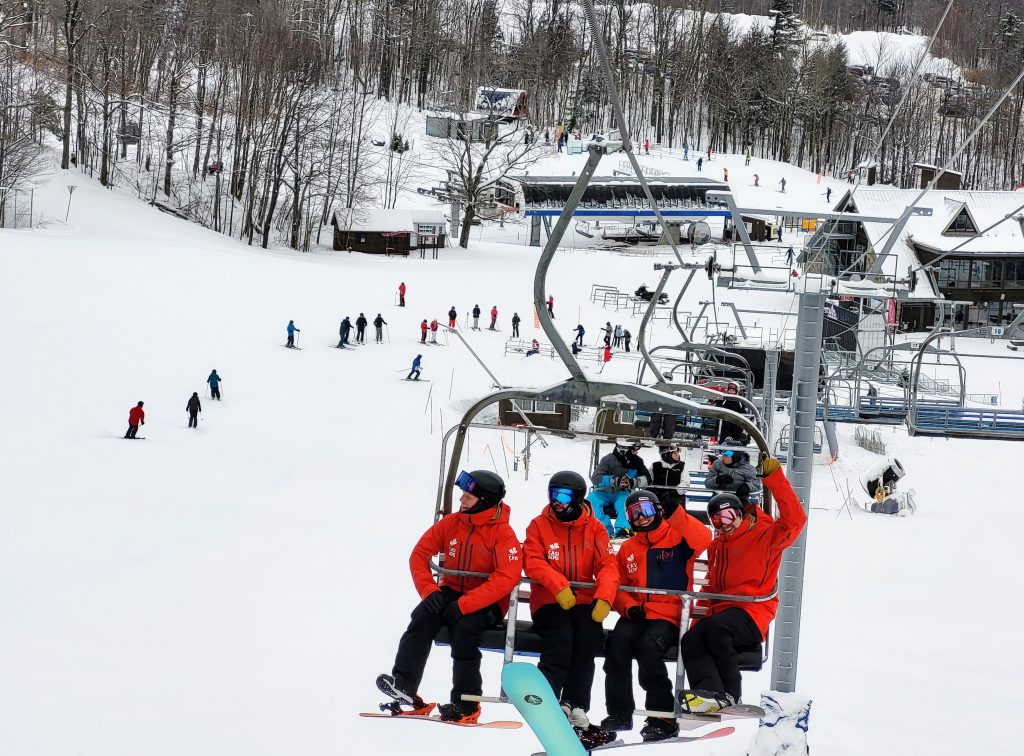
Un merci spécial au Mont Orford qui nous a accueilli sur ses pistes pendant ces trois jours!
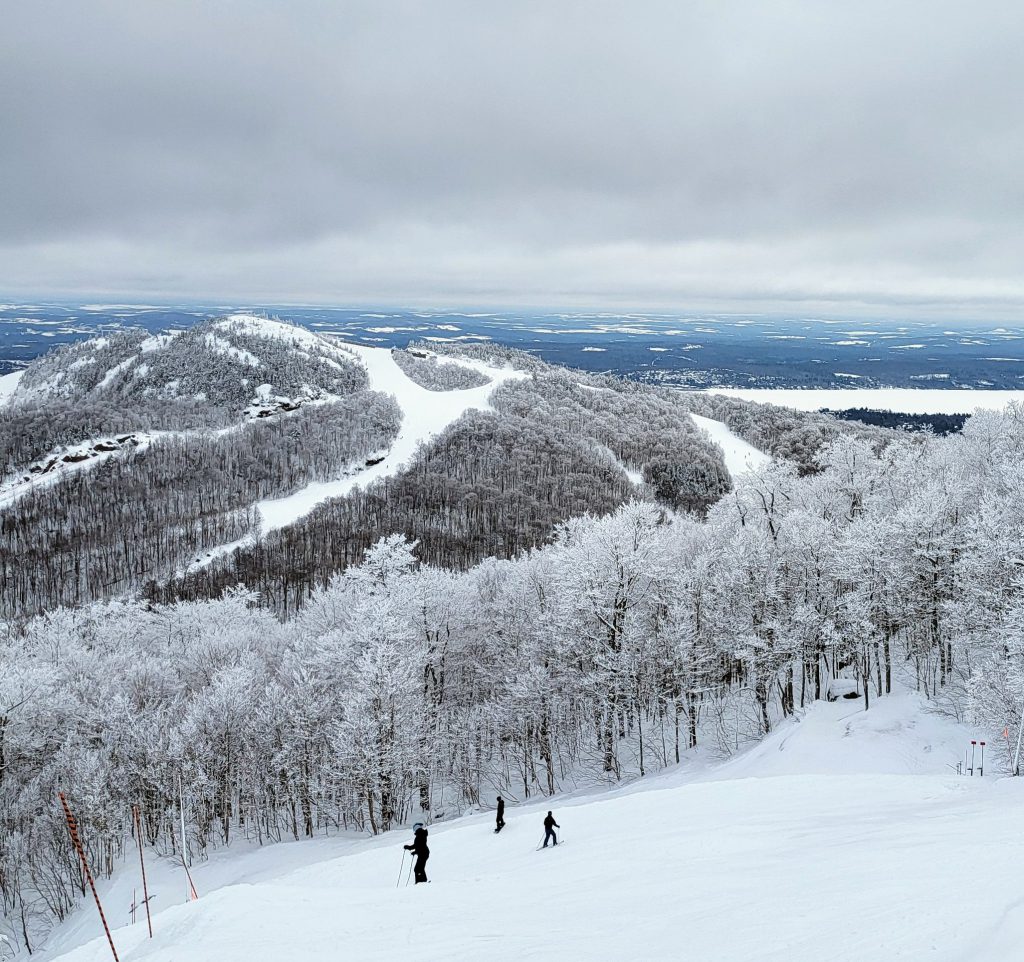
Trees were pure beauty in Orford ans snow conditions were great!
Session des membres avec l’équipe Interski
Nous avions aussi organisé une session des membres le dimanche 22 janvier. Plusieurs moniteurs de snowboard sont venus d’un peu partout au Québec mais aussi de l’Ontario pour participer à cette session d’amélioration technique et de formation des moniteurs. Ils ont pu rencontrer les membres de l’équipe Interski qui les représenteront lors de l’événement. Ce fût une belle journée sur les pentes tous ensemble où les sourires, les beaux virages et les discussions poussées de snowboard étaient évidemment à l’honneur.
La suite…
Dans les prochaines semaines l’équipe continuera ses préparatifs pour Interski – qui viendra bien assez vite – le tout en étant activement au travail sur le terrain pour nos différentes formations de l’ACMS.
L’équipe est évidemment fébrile de se retrouver en Finlande… Suivez-nous dans cette belle aventure !
Team Prep Camp Complete!
Team CASI is ready! The last few days saw the Interski team come together at Mont Orford, Quebec to focus on the coming Interski congress.
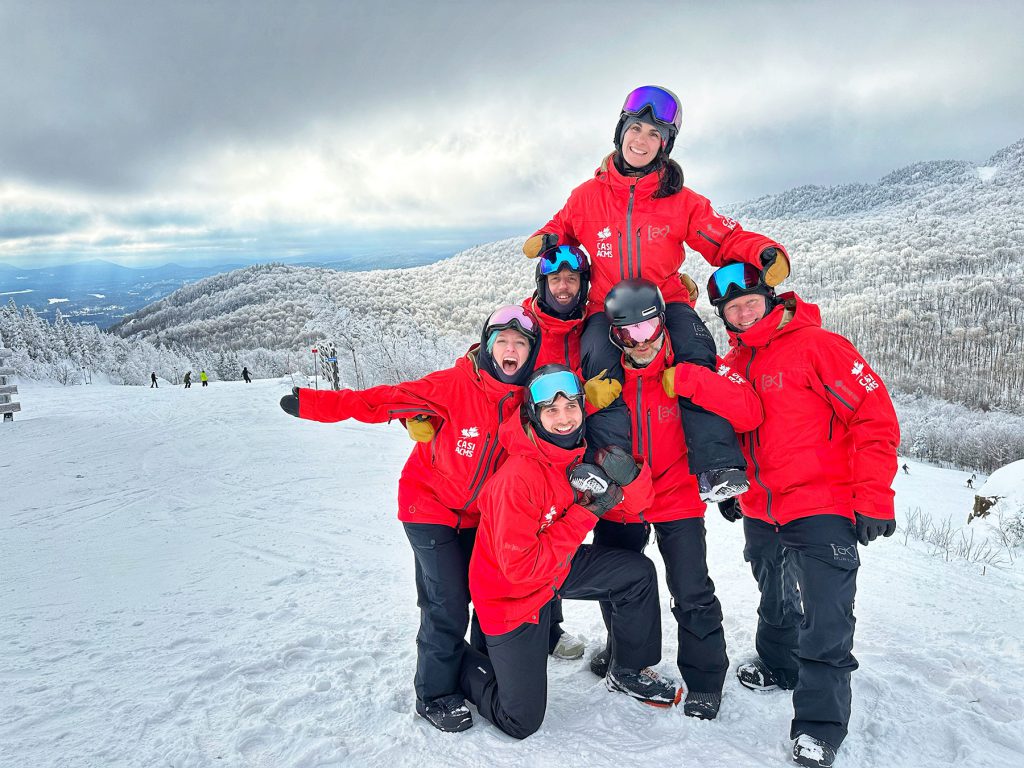
A huge note of thanks goes out to Mont Orford Resort for hosting us, along with our partner associations at the CSIA and CANSI. It really was a great venue for us to focus on preparing to present Canadian snowboard teaching to the world.
Day 1: Jan 22
On Sunday, we invited all CASI members in the area to attend a free on-snow session with members of the Interski team. With a huge turn-out, we have the opportunity to start to work out some thoughts and details regarding our on-snow message in Finland, and to share some of Canada’s best snowboard instruction with some of our CASI members. The stoke and enthusiasm was amazing to see, with members travelling from far and wide (some driving through the night!) to attend.
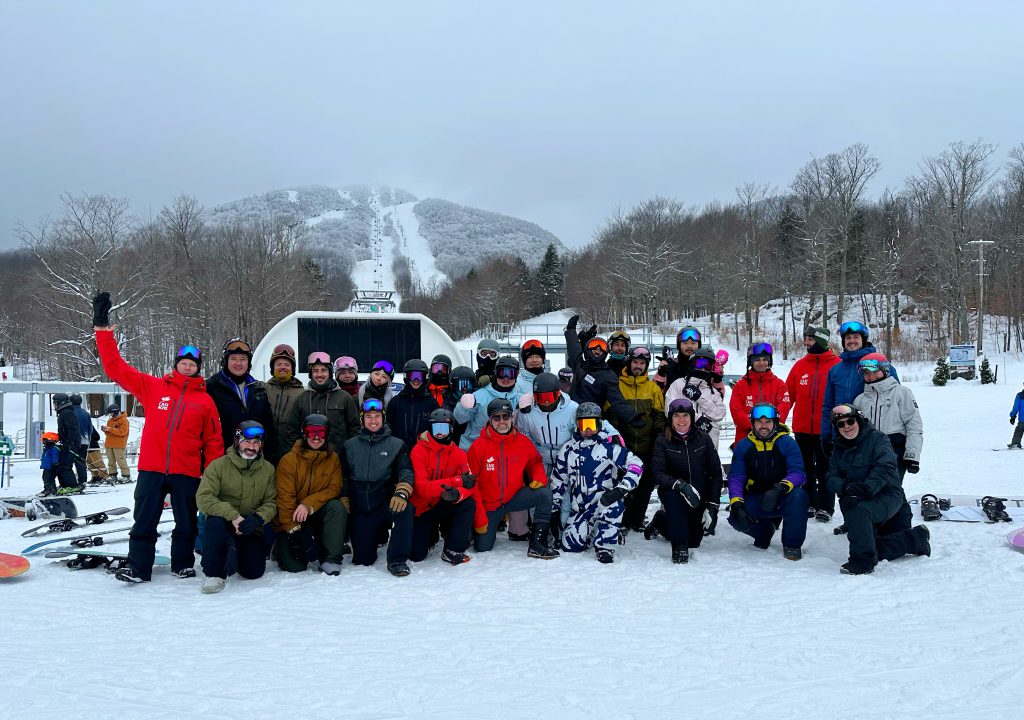
Day 2 & 3: Monday / Tuesday Jan 23, 24
With the Member Sessions complete, it was time to get to work.
A big part of Interski is showcasing the Canadian snowboard technique in a way that conveys performance, demonstration and fun! The team spent the early runs on Monday getting accustomed to riding together, following someone that they might not ride with regularly, and testing out different speeds and turn sizes.
Following that, much of the rest of the day focused on early discussions and preparation of our on-snow workshops. We are planning to present two workshops in Levi, with the goal of giving the other nations a glimpse into what we consider important aspects of great snowboard lessons.
Working in pairs, the team had a chance to hash out some presentation notes and ideas.
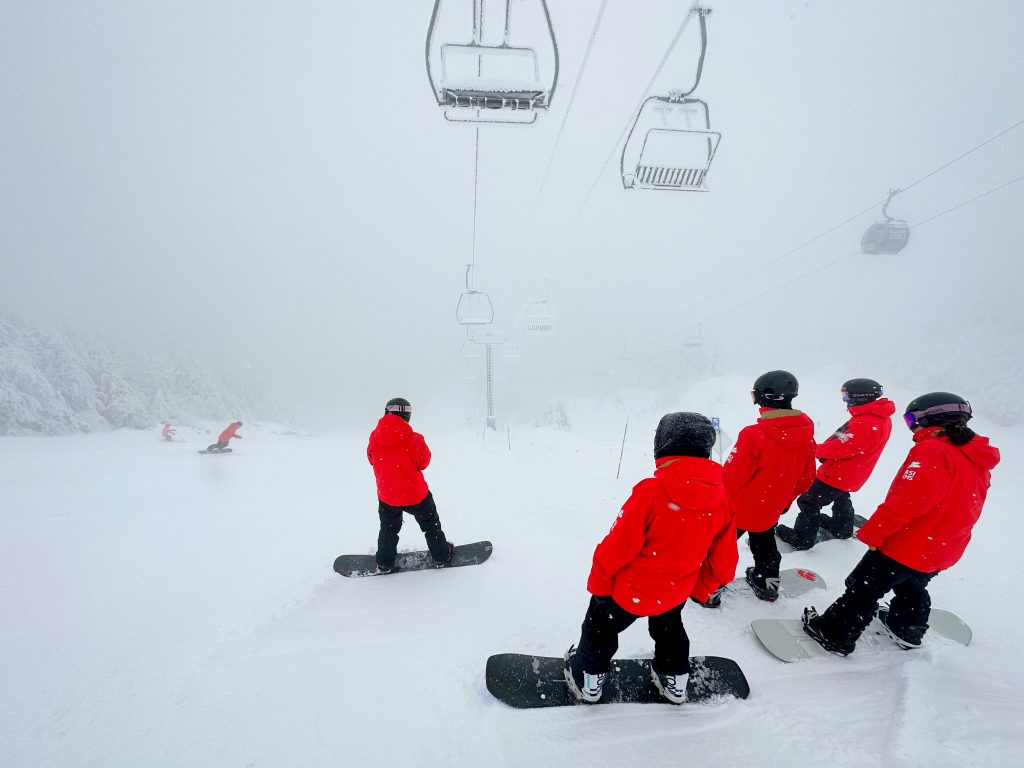
Day 2 of the camp started off with more group riding, with a focus on matching line and speed. Our goal for the demo runs is to showcase fast, smooth riding. The group found a good balance of speed and turn shape, and had some great early-morning warm-up runs together.
The rest of the morning was spent in presentation mode with some practice presentations of our on-snow workshops. It was a good chance to get feedback from each other, and make some notes about the best ways to convey our messages.
After lunch, the CASI, CSIA, and CANSI teams convened on the “demo slope” to work on the task of incorporating a demonstration run that includes all three disciplines (alpine ski, snowboard and telemark). The group found a flow together very quickly, and we’re looking forward to putting on a Canadian snow sliding show!
Overall, the time spent together building a cohesive team, fine-tuning our riding skills, and polishing our presentations was really valuable. We’re looking forward to the event in Levi in March!
New Zealand Park & Pipe
New Zealand has some very talented park riders.
New Zealand has a Park and Pipe course to educate instructors on how to teach in the park.
This course is somewhere in between Canada’s park 1 & park 2. In order to pass this course one must be able to spin clean 360’s both directions on a med jump, as well as over a side hit outside of the park. A rider must be able to show a Boardslide on a box with the board reaching 90 degrees in orientation with the box.
Their were many parts of the teaching style that I enjoyed. One in particular is how they incorporate the Environment into their teaching. For example we were hitting a medium jump and practicing our Shifty’s. We were asked to point the nose of our snowboards at the trees on the side of the run. This is a very simple idea but the visual cue did help me to get the most counter rotates that I could.
The Kiwi’s refer to a straight air as a primary movement. The next step was to add a shifty, which was referred to as a secondary movement. In order to pass their level 2, one must ride over a medium jump and incorporate some sort of secondary movement like a Shifty or a grab.
When teaching park, they believe an instructor must keep their student in the “sweet spot”. In order for a student to be in the sweet spot the instructor must balance safety with fun and achievement. Their teaching methodologies state that in order for a student to be successful they must be; comfortable, confident and committed.
In order to be successful with the park and pipe certification the candidate must be efficient at analysis and improvement. On the hill the evaluator shows the candidates a video of a student trying an unsuccessful trick with a cell phone. Students partner up, imagine that the rider on the video is the their partner and are tasked with going about giving their partner the feedback that they think they need.
Overall it was a great session that I really enjoyed and will start to incorporate some of their ideas into my own lessons.
Breen Trott
APSI riding concept: how to deal with Australian variable snow conditions
Hi there! Luc, Adam, and myself attended Australian presentation led by Kylie and Adam ( probably the youngest demo team member of whole snowboard crew here)
Even though I work with many Australian certified instructors in my home resort (Whistler Blackcomb) I personally am not really familiar with APSI system. So I was very curious to learn about it.
To start with, Adam came down the pitch with long radius turn demo highlighting APSI technique. Kylie who was with the group at the bottom, explained about his body position and edge application to the group. (Establish visual image) I found it this was a pretty good way to present. Especially someone like me who is a visual learner.
Messages here were :
1- Centre of Mass is close to the snowboard.
2-Stable and quiet upper body, all the actions happen with lower body.
Then we tried the edge engagement at the initiation of the run in APSI way as a static exercise. For toeside, move COM slightly inside to stack the body over the edge (inclination), then use a lot of knee flexion to increase edge angle (angulation). For heelside, again minimum inclination, but creating edge grip by flexing hips joints to start with ( more vertical flexion at hip joints). Key point here is that I felt that APSI uses less inclination than CASI.
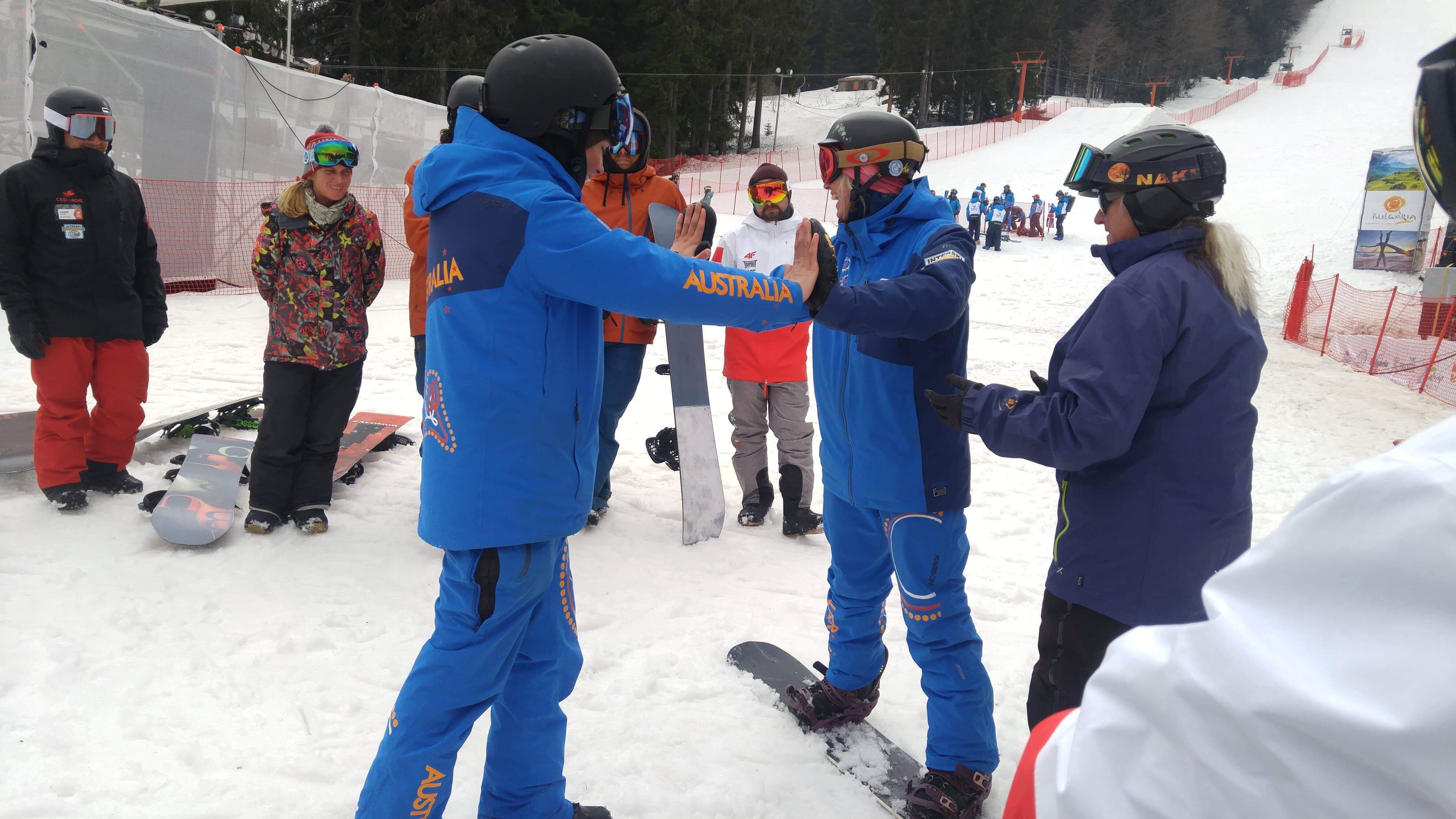
Then we tried a few carved uphill turns to feel this movement while moving. Here they emphasized that how they achieve the edge angle : highest edge angle = lowest body position. (This level of edge skill is required for level 1 certification) Again this body position being COM close to the board and quiet upper body is important in order to cope with Australian variable snow conditions especially when it is icy, for them it is not a smart thing to move upper body too far inside and COM away from the board.. that is what they said.
Move on to the one of the exam task of level 2 : Long Turn. Level 1 edge skill was how to feel the grip. Here for level 2 is focus on edge application especially at transition. (They told us to be patient at the top of the turn not rushing to apply edge too soon and not too aggressive) So at the transition phase, run the board fairly flat for the top part of the turn, then increase edge angle and load the board towards the bottom of the turn.
For level 3 level long turns. We experimented three different body parts to have more tension to ride : upper body, core, legs. And we compared which one would be more beneficial to achieve performance for ourselves. Again they explained little bit of the sequence of the movement regarding edge application movement. Release ankle and incline first at the start of the turn them flex at the completion phase of the turn. Still mentioning quiet and passive action at the top of the turn and all the actions happen towards the bottom of the turn. Those actions are, more edge, more pressure application and aggressive vertical flexion. I personally felt by doing that so much pressure built up towards the bottom of the turn and with the slush snow we were riding, It was slowing me down during that phase…
Level 4 they introduced separation of upper and lower body. Definitely more extreme level compared to CASI way of interpretation of upper-lower body separation. For APSI separation is introduced by keeping hips parallel to the snowboard while separating upper and lower body at the waist, upper body turns more towards the direction of travel (more anticipated position) According to APSI, by doing this position, it creates the strong core tension and also this position allows the rider to create dynamic angulation with shoulders, which stabilizes the body position with levelled shoulders to the pitch and perform level 4 standard long turns.
Here, even for level 4 standard, APSI still mentioned that the top of the turn has minimum actions regarding edge angle and pressure, instead, just creating platform that body can stand on, all the actions happen past the fall line.
I understand that every country has different way to interpret when it comes to riding techniques, quite often it is determined by the terrain and snow conditions.
What I learned today from APSI presentation was an interesting interpretation of edge and pressure application based on variable snow condition that Australian mountain has. However I found it was quite different from what we promote in CASI especially when we try to achieve higher level of performance. We CASI definitely use more inclination at the transition, start applying edge grip as well as pressure before the fall line to achieve more dynamic performance.
Thank you for reading this long blog!
Yuki
